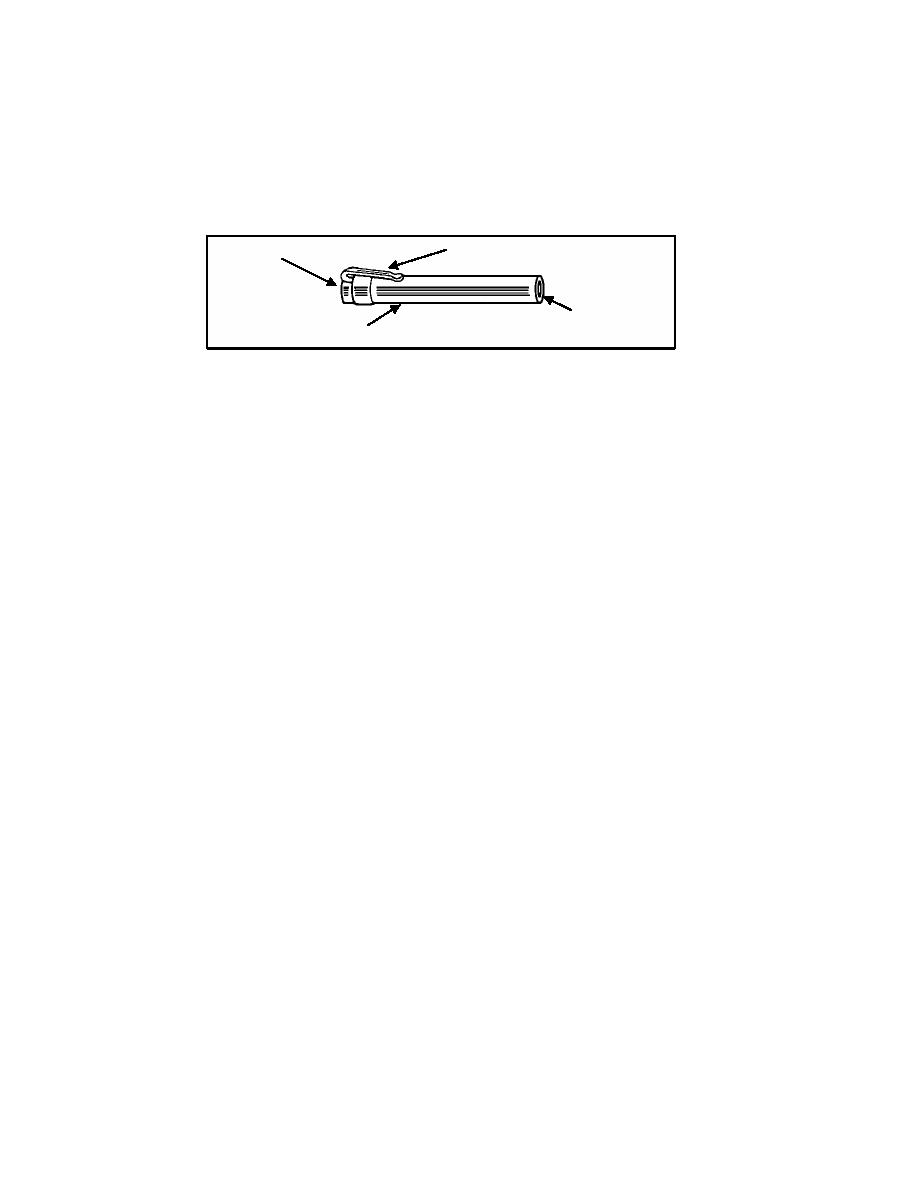
in the units. This will permit the commander to more effectively employ the command on the nuclear
battlefield. The main source of this nuclear radiation is fallout.
2-3. Characteristics. There are three models of dosimeters: IM-93/UD, IM-93A/UD, and IM 147/PD.
All models are self-indicating, direct-reading pocket dosimeters. Each is a hermetically sealed assembly
in a metal barrel (Figure 2-1).
Viewing end
Pocket clip
Charging end
Metal barrel
Figure 2-1. Dosimeter
a. IM-93/UD and IM-93A/UD dosimeters are considered standard tactical dosimeters. They are
issued on the general basis of two per platoon. The readings received at this level form the basis for
controlling the exposure of personnel on the nuclear battlefield.
b. The IM-147/PD dosimeter is issued to radiological survey and monitoring teams. It permits the
teams to determine when the turn-back dose has been reached. The survey and monitoring teams will
receive more radiation than other soldiers who are not on the teams. The total dose for these teams is
controlled. The total dose status of these teams is a matter of interest to the Nuclear, Biological, and
Chemical Center (NBCC). It is one of the measures used by the NBCC in selecting which teams are to
perform surveys.
c. Features of the dosimeter are detailed below and illustrated in Figure 2-2.
(1) Optical system. The optical system consists of an eyepiece lens and an objective lens.
The eyepiece lens gives a magnified view of the calibrated scale. The objective lens gives a greatly
magnified view of the shadow of the indicating fiber.
(2) Charging end. Light enters the dosimeter through the charging end and illuminates the
field of view.
(3) Protective cap. A protective cap is fitted over the charging end to prevent foreign matter
from entering. If the cap is made of a clear material that allows light to pass through, the dosimeter may
be read with the cap on. When the cap is made of any other material, the cap must be removed to take a
reading. If the protective cap is lost or defective, it should be replaced with clear cellophane tape or
similar material.
(4) Charging contact. The charging contact allows the dosimeter to be charged using a
RADIAC detector charger. This item will be referred to as a charger for the remainder of this lesson.
CM2306
2-2


 Previous Page
Previous Page
